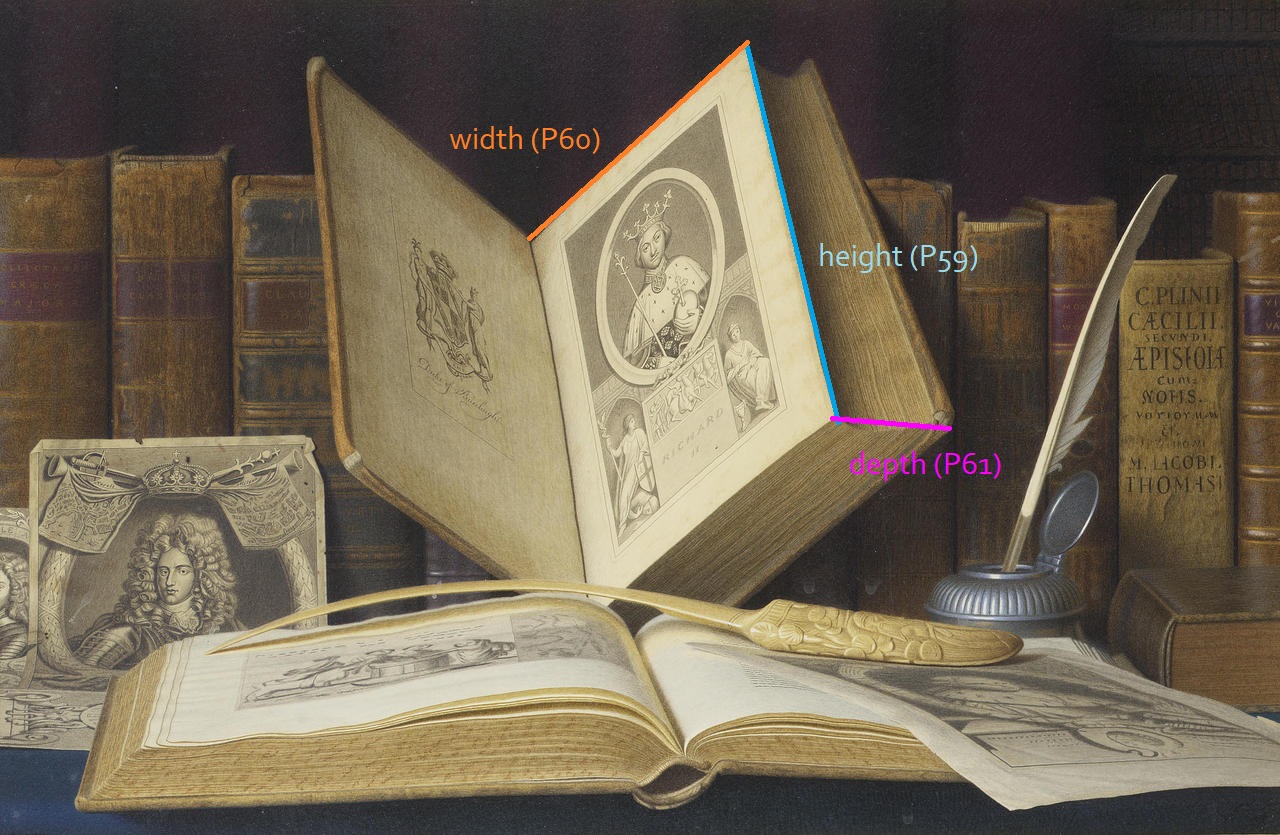FactGrid:Data model for manuscripts
Data model for manuscripts
This data model is developed according the "DFG-Richtlinien Handschriftenkatalogisierung", chapter "Mittelalterliche Handschriften" [DFG].
The standard model for a manuscript item is Oxford, Bodleian Library, MS Broxbourne 84.3 (Item:Q195086)
The data model should allow a data import from different sources, including the most important database for medieval manuscripts in German [www.handschriftencensus.de Handschriftencensus] [HSC], and the upcoming Handschriftenportal. An important standard for manuscript description is the TEI msdescription module [TEI].
manuscript items
Label and Description
Every manuscript item should be labeled with MS: Place, Libary, Shelfmark [MS: Oxford, Bodleian Library, MS Broxbourne 84.3]
The description is a statement on the textual content of the manuscript. It gives Author and 'Title' or title/texttype (DFG: Sachtitel) or the topic of a multiple text manuscript (DFG: "sumarische Inhaltsbezeichnung (z.Bsp. kanonistische Sammalhandschrift)"). Example: [Geomancy – Astrology – Recipes for fire weapons (Büchsenmeisterbuch) – Prognostication – Wonder-Drug Recipes – 'Großes Planetenbuch']
instance of
Every manuscript should be marked as manuscript (Item:Q5).
According to the format the manuscript is either a
- codex (Item:Q19)
- fragment (#new)
- roll (#new)
- single sheet (#new)
(There are more manuscript types for non-european manuscripts.)
Depending on the production of the codex, a codex is either a
- monomerous codex (#new item) = a manuscript containing a single codicological unit (Item:Q195167) = a manuscript containing one production unit
- composite (#new) = a codex which contains two or more codicological units (Item:Q195167) = a manuscript containing several production unit
Depending on the number of texts in ist every production unit (monomerouse codex or codicological unit) can be either a
- Single Text Manuscript (#new)
- Multiple Text Manuscript (#new)
core information (DFG:Schlagzeile)
Following information should be provided for every manuscript
- holding institution (Property:P329), should be instance of Library (Item:Q11249)
- writing surface (Property:P480) (DFG/HSC:Beschreibstoff)
- collation (Property:P107) (DFG:Blattzahl; HSC: Umfang)
- height (Property:P59) (DFG: first number in 'Format des Buchblocks'; HSC: first number in 'Blattgröße')
- width (Property:P60) (DFG: second number in 'Format des Buchblocks'; HSC: second number in 'Blattgröße')
- place of origin(Property:P95) (DFG: Entstehungsort; HSC: Entstehungsort/Schreibort)
=> #new qaulifiers needed (uncertain; region around) These might be useful: Property:P425 und Property:P467 exist as Qualifiers to express the precision. Property:P155 is there to give the certainty of a statement.
- date (Property:P106) instance of date of manuscript (Item:Q164750), with qualifier Property:P155(DFG/HSC:Entstehungszeit)
- language (P18), should be instance of language (Q4) #new Items for all German dialect groups needed
online resources
- online digitization (Property:P138)
- online transcript (Property:P69)
- online information (Property:P146)
- online catalogue (Property:P438)
checklist for online resources of medieval German manuscripts
- https://handschriftencensus.de/
- http://manuscripta-mediaevalia.de
- https://manuscripta.at
- https://www.e-codices.unifr.ch/de
- http://dtm.bbaw.de/HSA/hsa-index.html
- https://kdih.badw.de/datenbank/start
- https://www.wasserzeichen-online.de/wzis/struktur_quellen.php
- https://www.hist-einband.de
- https://ptolemaeus.badw.de/jordanus/data
Literature
- Michael Friedrich and Cosima Schwarke, Introduction – Manuscripts as Evolving Entities, in: Michael Friedrich and Cosima Schwarke (eds.), One-Volume Libraries: Composite and Multiple-Text Manuscripts (Studies in Manuscript Cultures 9), Berlin: De Gruyter 2016, p. 1–26.
- Johan Peter Gumbert, Codicologische eenheden – opzet voor een terminologie (Mededelingen van de Afdeling Letterkunde, NF 67,2), Amsterdam 2004.
- Johan Peter Gumbert, Codicological Units: Towards a Terminology for the Stratigraphy of the Non-Homogeneous Codex, in: Segno e Testo 2 (2004), S. 17–42.
- Johan Peter Gumbert, Zur Kodikologie und Katalographie der zusammengesetzten Handschrift, in: Edoardo Crisci, Marilena Maniaci und Pasquale Orsini (Hg.), La descrizione dei manoscritti: esperienze a confronto, Cassino 2010, S. 1–18.
